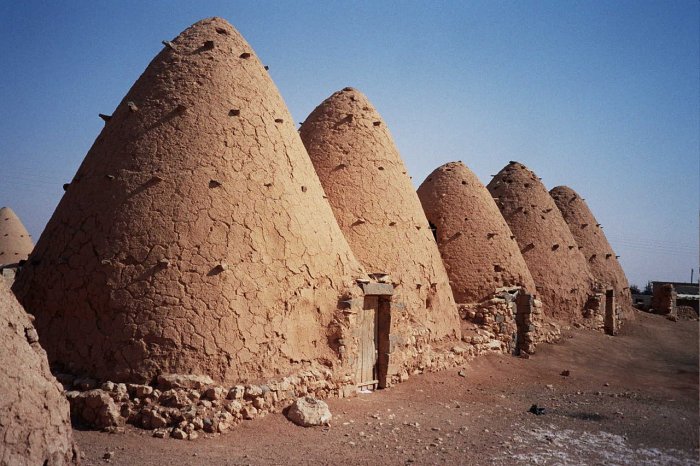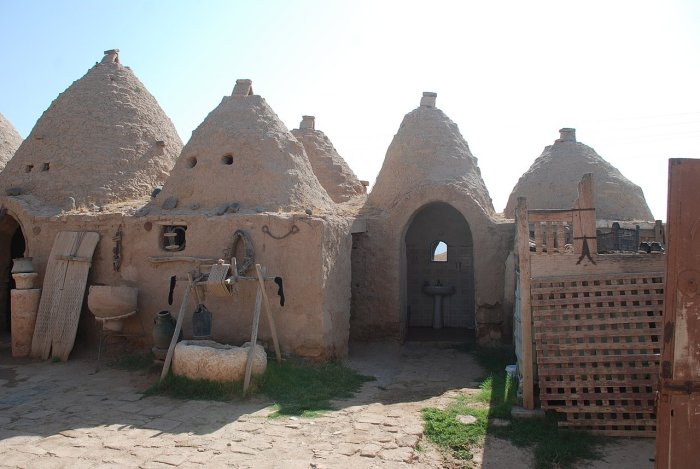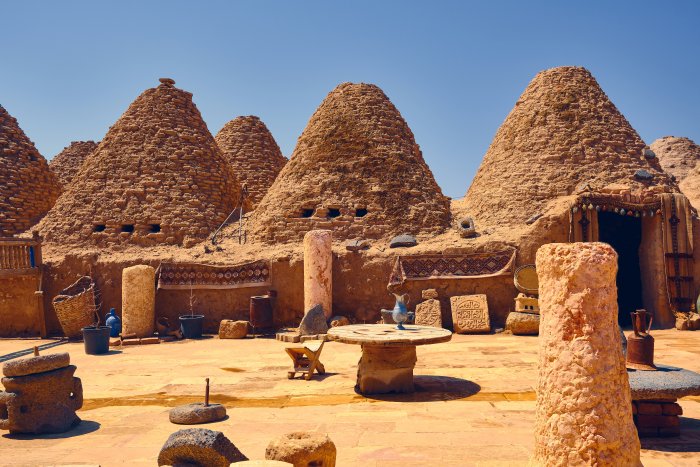Beehive’ Adobe Houses Of Ancient City Of Harran, Upper Mesopotamia
A. Sutherland - AncientPages.om - Harran was an ancient city in Upper Mesopotamia, situated at a crucial geographical crossroad between the Euphrates and Tigris rivers. It had a strategic location at the border between the ancient Mesopotamian and Anatolian cultures.
En Sarouj (Hama). Image credit: upyernoz - CC BY 2.0
The city was famous for the temple of the Moon-god Sin and the defeat of the Roman general Crassus in 53 BC ("Battle of Carrhae"). Today, Harran is famous for its traditional 'beehive' adobe buildings that were cool inside and constructed entirely without wood. Their design has not been changed for at least 3,000 years. The history of the ancient Harran's "beehive" adobe houses goes back in time. Rich is also Harran's history.
The city was founded in an area occupied by two trade routes between Syria, Asia Minor, and Mesopotamia. In this city, Abraham's father, Terah, settled down after leaving Ur. (Leviticus 11:31: the city was called Haran).
From the third millennium BC until medieval times, Harran (in Roman, Carrhae) was an important trade center located on the road from the Mediterranean Sea to the heart of Assyria. Abraham stayed there while on his voyage from Ur
Before the reign of Sennacherib (704–681 BC), the king of Assyria from 705 BC to 681 BC was mainly known for his military campaigns against Babylon and Judah; Harran rebelled against the mighty Assyrians.
Harran dome houses. Image credit: Acar54 - CC BY-SA 3.0
The Assyrians reconquered the city, as mentioned in 2 Kings 19:12 - "Did the gods of the nations that were destroyed by my predecessors deliver them—the gods of Gozan, Harran, Rezeph and the people of Eden who were in Tel Assar? Isaiah 37:12. says that it was deprived of many privileges, which were later restored. The sanctuary of Ehulhul in Harran was later restored by Assyrian rulers like Shalmaneser III ("the god Shulmanu is pre-eminent").
He ruled Assyria (859–824 BC) and was known for his constant and successful campaigns against the eastern tribes, the Babylonians, and the nations of Mesopotamia, Syria, and another prominent figure, Ashurbanipal (668-631 BC). The earliest records of Harran come from Ebla tablets (late 3rd millennium BC).
From these, it is known that an early king or mayor of Harran had married an Eblaite princess, Zugalum, who then became "queen of Harran," whose name was frequently mentioned in ancient documents. It appears that Harran remained a part of the regional Eblaite kingdom for some time.
Royal letters from the city of Mari in the middle of the Euphrates have confirmed that the area around the Balikh river remained occupied in c. the 19th century BC. A confederation of semi-nomadic tribes was especially active around the region near Harran then.
Harran is also mentioned as the provincial capital of the Assyrian empire (until the late seventh century BC). God Sin and his moon sanctuary were closely associated with Harran until the third century CE. But Sin was not the only god worshiped in this ancient city; there were others, such as the Syrian goddess Atargatis, god Sin's consort Ningal, and the Arabian goddess Allat ("Mrs. God").
Beehive homes in Harran, Turkey. Credit: Adobe Stock - Philipp Berezhnoy
Modern people mainly associate Harran with the city's dome-like structures known as “beehive houses.” Wood is rare in the Harran region because of the area's dry climate. People built their houses with materials they could find easily, like adobe, brick, and stone.
The Harran conical houses served people for a very long time. They first appeared around 3000 years ago.
The beehive homes are wonderfully cool places in the desert heat. Their thick mud brick (adobe) walls effectively trap the cool and, at the same time, keep the sun out. Beehive homes have few windows.
The high domes collect the hot air, moving it away from the ground floor, keeping the interior around 75°F (24°C) while outside extremes range from 95°F (35°C) to 32°F (0°C). Each dome is built from approximately 1,400 adobe bricks. The nomadic lifestyle and the climatic conditions forced people to adopt a building form that could be constructed easily, like a tent, but perfectly resists heat and cold.
The roofs have a high heat capacity (the ability to store heat) to absorb the sun's rays during the day and slowly release it to the interior during the cool night. The roof slopes steeply to shed the occasional but heavy rains.
Julian Huxley, the traveler and author, described beehive homes as built of "unburnt mud or clay, with the floor slightly raised above the soil outside, spotlessly clean, with a recess for cooking and attractive decorations in bright tinsel paper on the walls. Though only a few yards in diameter, its high conical roof gave it a sense of space".
The beehive homes survived for thousands of years. They constitute a genius design of ancient people who knew how to build to resist the stresses of strong winds and withstand earthquakes, strong wind, storms, and heavy seasonal rains. It is the reason why these buildings are still in use today.
Written by – A. Sutherland - AncientPages.com Senior Staff Writer
Updated on February 4, 2024
Copyright © AncientPages.com All rights reserved. This material may not be published, broadcast, rewritten or redistributed in whole or part without the express written permission of AncientPages.com
Expand for referencesReferences:
W.F. Albright, Institute of Archaeological Research in Jerusalem. Symbiosis, Symbolism, and the Power of the Past
http://naturalhomes.org/
Lipschitz O. The Fall and Rise of Jerusalem
More From Ancient Pages
-
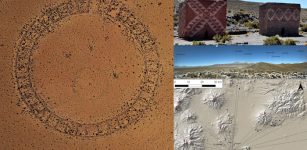 Mysterious Ancient Andean Waskiri Structure Built For Unknown Purpose Investigated By Scientists
Archaeology | Apr 14, 2023
Mysterious Ancient Andean Waskiri Structure Built For Unknown Purpose Investigated By Scientists
Archaeology | Apr 14, 2023 -
 Queen Dido Of Carthage: Founder Of Prosperous City On Africa’s Northern Coast
Featured Stories | May 21, 2020
Queen Dido Of Carthage: Founder Of Prosperous City On Africa’s Northern Coast
Featured Stories | May 21, 2020 -
 Unexplained Encounters With Unknown Beings In California – Old And Modern Reports
Featured Stories | Mar 11, 2024
Unexplained Encounters With Unknown Beings In California – Old And Modern Reports
Featured Stories | Mar 11, 2024 -
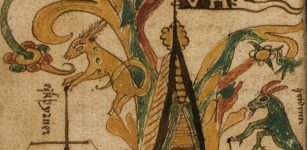 Eikthyrnir – Mythical Male Deer And Heidrun She-Goat Stand On The Top Of Valhalla
Featured Stories | Feb 11, 2019
Eikthyrnir – Mythical Male Deer And Heidrun She-Goat Stand On The Top Of Valhalla
Featured Stories | Feb 11, 2019 -
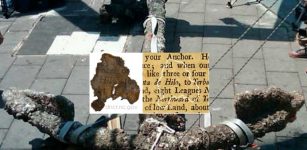 Tiny Paper Scraps From ‘Queen Anne’s Revenge’ Shed Light On Reading Habits Of Blackbeard’s Pirates
Archaeology | Jan 7, 2018
Tiny Paper Scraps From ‘Queen Anne’s Revenge’ Shed Light On Reading Habits Of Blackbeard’s Pirates
Archaeology | Jan 7, 2018 -
 16 Dead Sea Scrolls Fragments Are Forgeries – U.S. Bible Museum Says
Artifacts | Mar 15, 2020
16 Dead Sea Scrolls Fragments Are Forgeries – U.S. Bible Museum Says
Artifacts | Mar 15, 2020 -
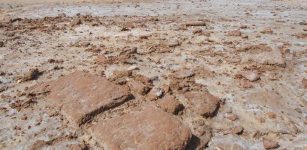 Ancient Trade Routes Between Iran And Mesopotamia – Uncovered
Archaeology | Dec 4, 2015
Ancient Trade Routes Between Iran And Mesopotamia – Uncovered
Archaeology | Dec 4, 2015 -
 Curious Historical Observation Of A Bronze Age Warrior Who Shouldn’t Exist
Featured Stories | May 21, 2019
Curious Historical Observation Of A Bronze Age Warrior Who Shouldn’t Exist
Featured Stories | May 21, 2019 -
 Ancient Mystery Of Leti – A Homo Naledi Child Of Darkness Discovered In The Rising Star Cave System
Archaeology | Nov 6, 2021
Ancient Mystery Of Leti – A Homo Naledi Child Of Darkness Discovered In The Rising Star Cave System
Archaeology | Nov 6, 2021 -
 On This Day In History: Henry IV Is Crowned King Of France – On Feb 27, 1595
News | Feb 27, 2017
On This Day In History: Henry IV Is Crowned King Of France – On Feb 27, 1595
News | Feb 27, 2017 -
 12 Masonic Symbols Explained
Ancient Symbols | Jul 2, 2018
12 Masonic Symbols Explained
Ancient Symbols | Jul 2, 2018 -
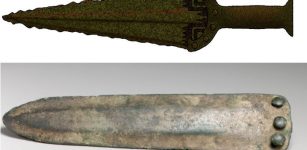 Scientists Can Finally Answer What Bronze Age Daggers Were Used For
Archaeology | Apr 29, 2022
Scientists Can Finally Answer What Bronze Age Daggers Were Used For
Archaeology | Apr 29, 2022 -
 Arachne – Spider Woman Who Challenged Goddess Athena And Was Punished
Featured Stories | Dec 5, 2018
Arachne – Spider Woman Who Challenged Goddess Athena And Was Punished
Featured Stories | Dec 5, 2018 -
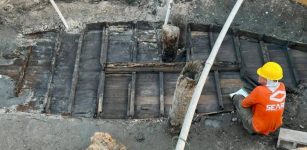 Remarkable Discovery Of A 19th-Century Boat Buried Under A Road In St. Augustine, Florida
Archaeology | Oct 16, 2023
Remarkable Discovery Of A 19th-Century Boat Buried Under A Road In St. Augustine, Florida
Archaeology | Oct 16, 2023 -
 What Does The Brain Of The Homo Erectus Fossil With The Lowest Cranial Capacity Tell About Evolution?
Archaeology | Mar 2, 2023
What Does The Brain Of The Homo Erectus Fossil With The Lowest Cranial Capacity Tell About Evolution?
Archaeology | Mar 2, 2023 -
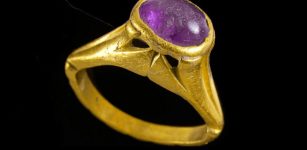 Ancient Greek Amethyst Ring To Ward Off A Hangover Discovered At The World’s Largest Byzantine Wine Factory In Yavne, Israel
Archaeology | Nov 12, 2021
Ancient Greek Amethyst Ring To Ward Off A Hangover Discovered At The World’s Largest Byzantine Wine Factory In Yavne, Israel
Archaeology | Nov 12, 2021 -
 Varahamihira: Indian Sage And One Of The Greatest Minds Of All Time
Featured Stories | Sep 13, 2016
Varahamihira: Indian Sage And One Of The Greatest Minds Of All Time
Featured Stories | Sep 13, 2016 -
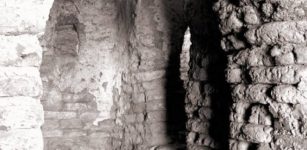 900-Year-Old Crypt At Old Dongola: Magical Inscriptions And Mysterious Signs Found
Archaeology | Sep 12, 2015
900-Year-Old Crypt At Old Dongola: Magical Inscriptions And Mysterious Signs Found
Archaeology | Sep 12, 2015 -
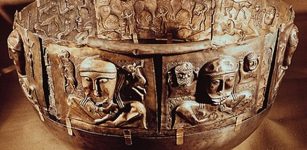 Gundestrup Cauldron: Great Gilded Silver Vessel Decorated With Scenes Derived From Celtic Mythology
Artifacts | May 30, 2016
Gundestrup Cauldron: Great Gilded Silver Vessel Decorated With Scenes Derived From Celtic Mythology
Artifacts | May 30, 2016 -
 Veles And Perun: Most Powerful Slavic Gods In Conflict Between Powers Of Light And Darkness
Featured Stories | Jun 26, 2017
Veles And Perun: Most Powerful Slavic Gods In Conflict Between Powers Of Light And Darkness
Featured Stories | Jun 26, 2017

